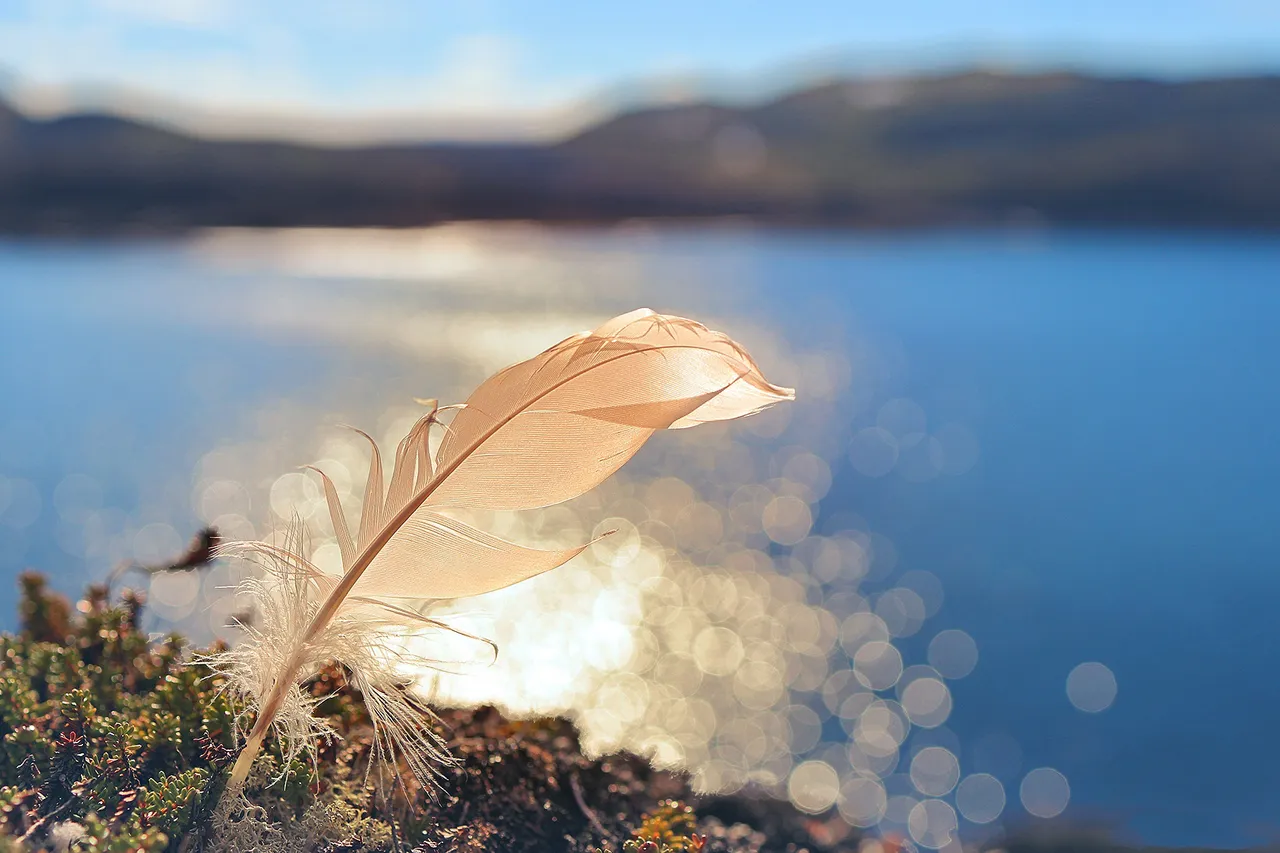Today I decided to risk my life a little to get a couple of good shots in my ornithological album. I know the location of a couple of bird markets that you can get close to at low tide. Noticed them a month ago on a boat trip, and the sailors confirmed that the huge white dots on the background of gray rocks are bird colonies, and I can walk along the shore to them, but not before June. Well, June has come, and here I'm.
The coast greeted me with wonderful weather, bright polar sun, blue sky and almost no cold wind from the sea, which I will regret soon ...
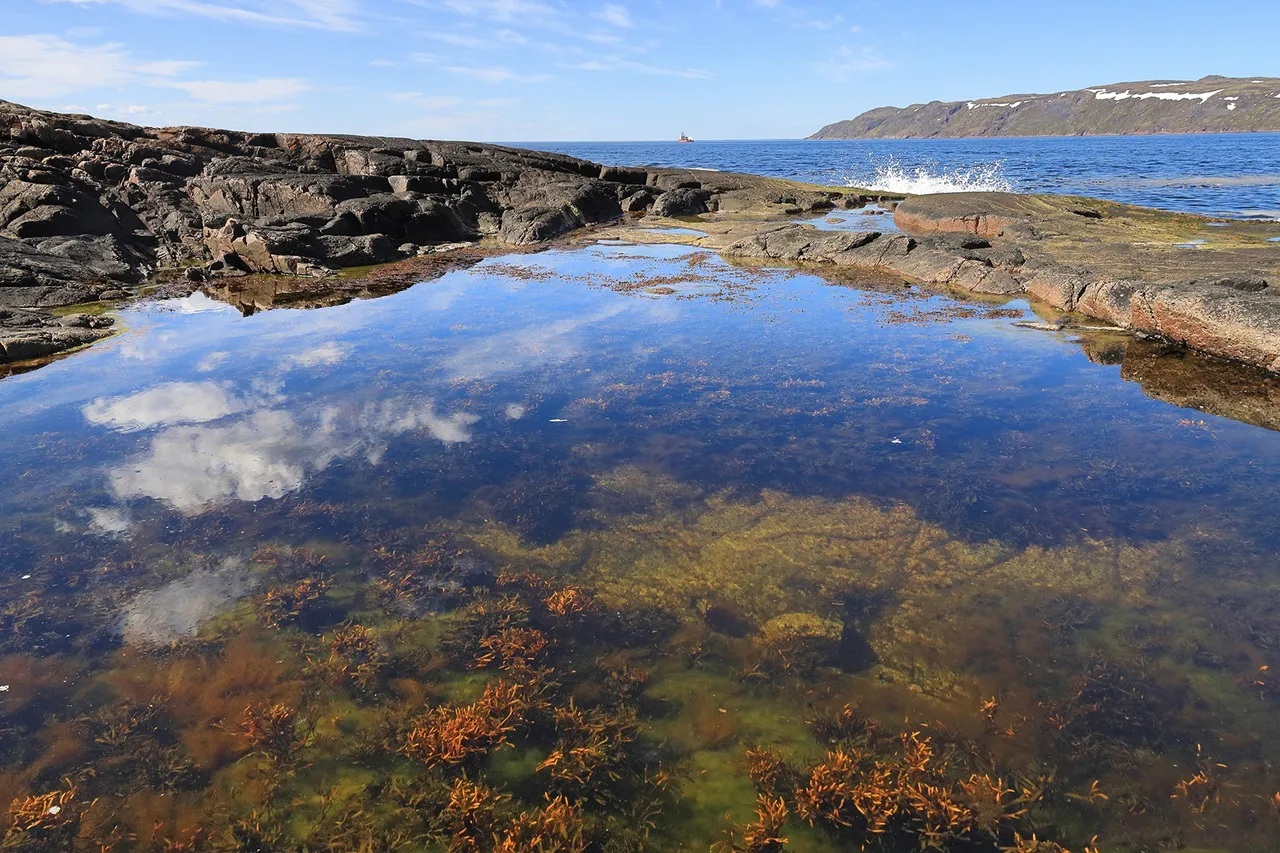
Cozy flooded craters on the shore of this giant are self-sufficient ecological worlds in which their own life is boiling, according to their own rules. Not as grandiose as in the depths of the sea, but no less interesting.
The landscape on my way begins to change rapidly, literally after 10 minutes of walking towards less tourist routes. Without having time to look back, it's as if I find myself in the Martian rocks, probably as they were millions of years ago, or may become, after terraforming.
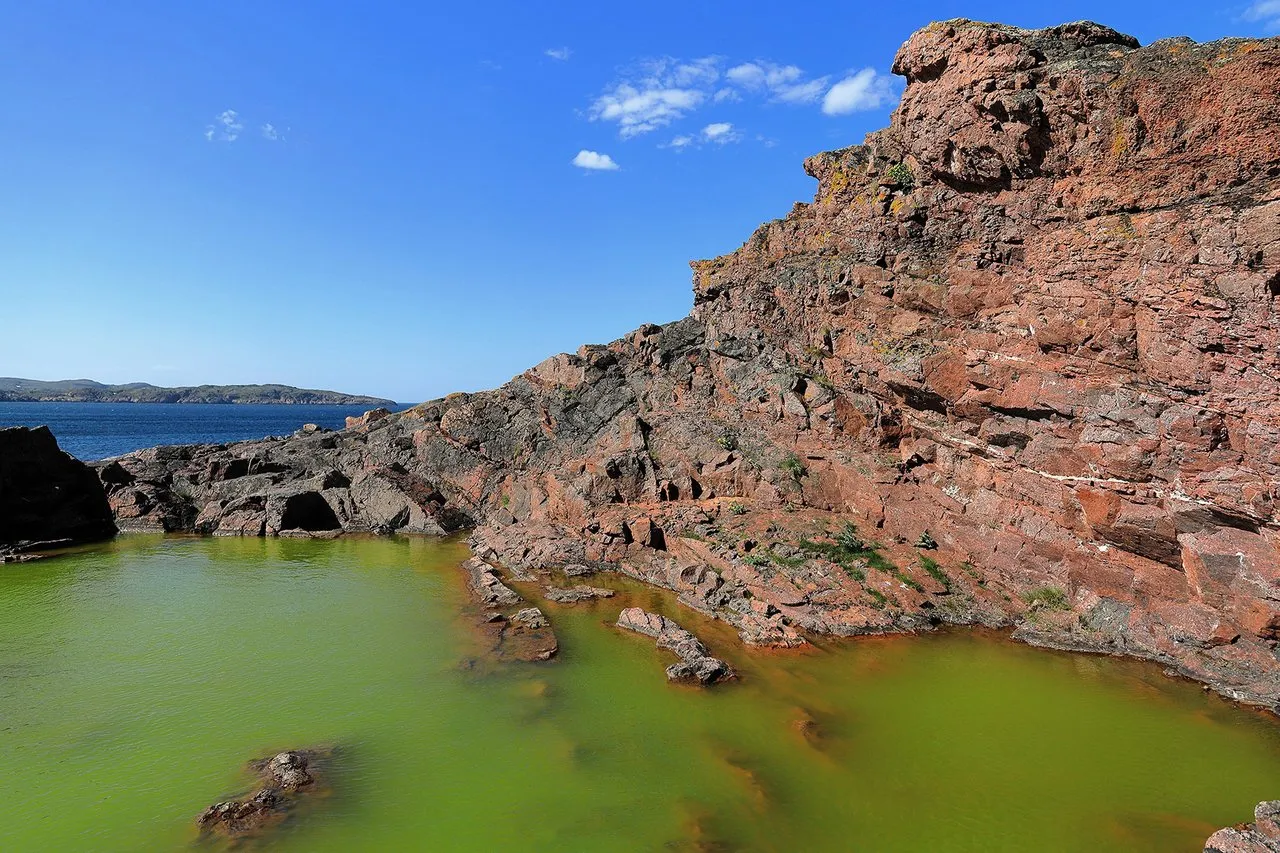
During storms, tons of water are breaking on coastal rocks, but still they throw part of their carcass further onto land, forming such huge "puddles" in which only the simplest organisms - algae live. They feel great, and fill all the free space, blooming violently under the sun. There is a very strong smell of iodine around, but gradually it begins to give way to another smell…
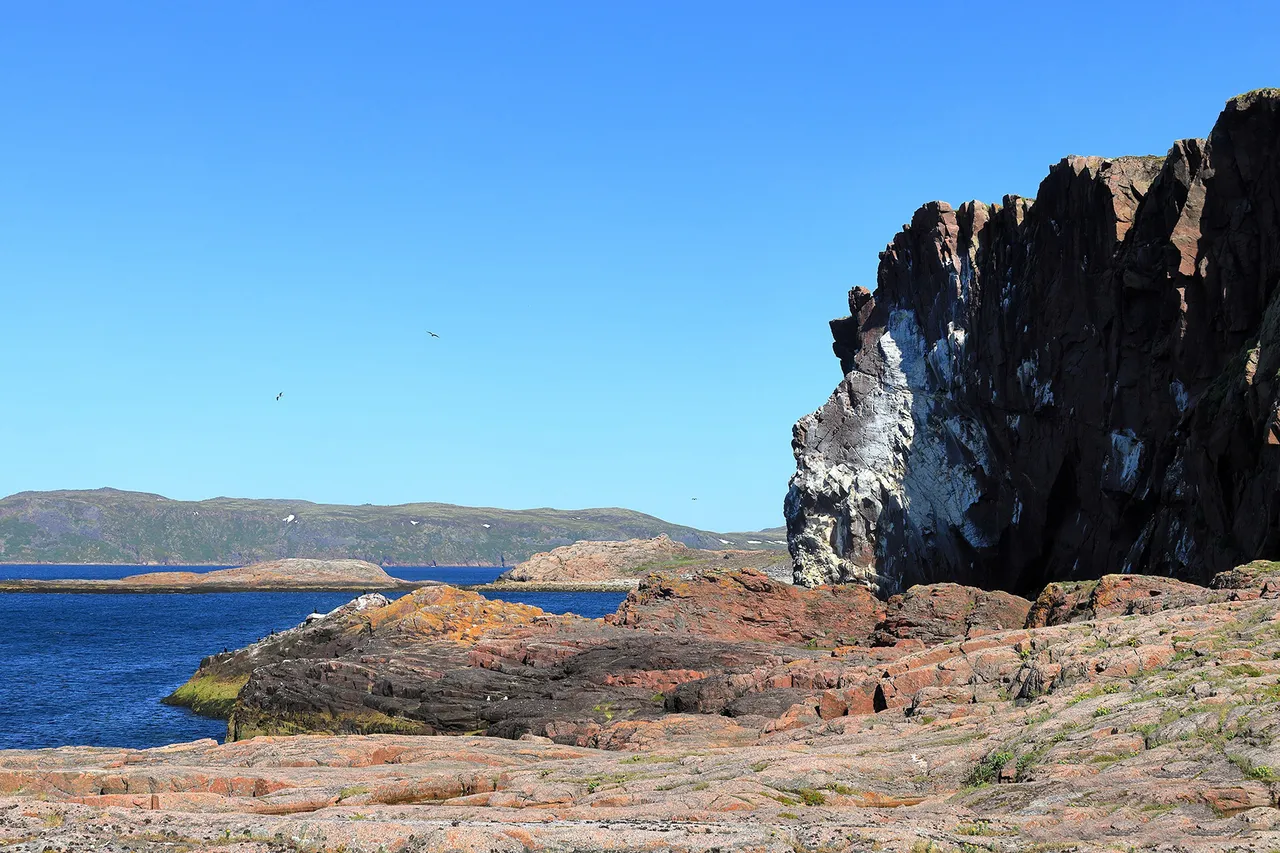
I can already see my goal. From a distance, it may seem like it's just a rock, but you immediately realize that something is wrong here. White granite, among the black and red local rocks, is impossible. Maybe it's snow on the shady side of the ledge? If only…
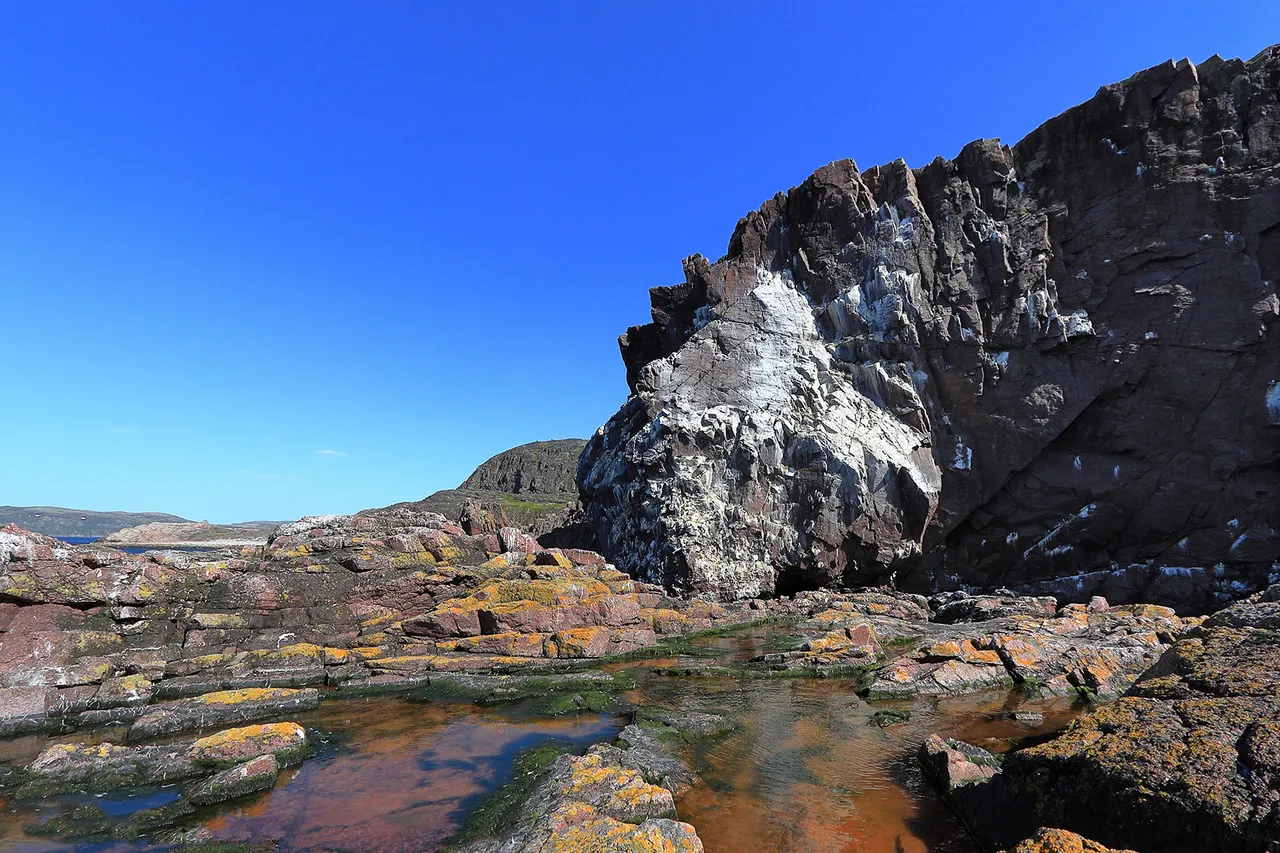
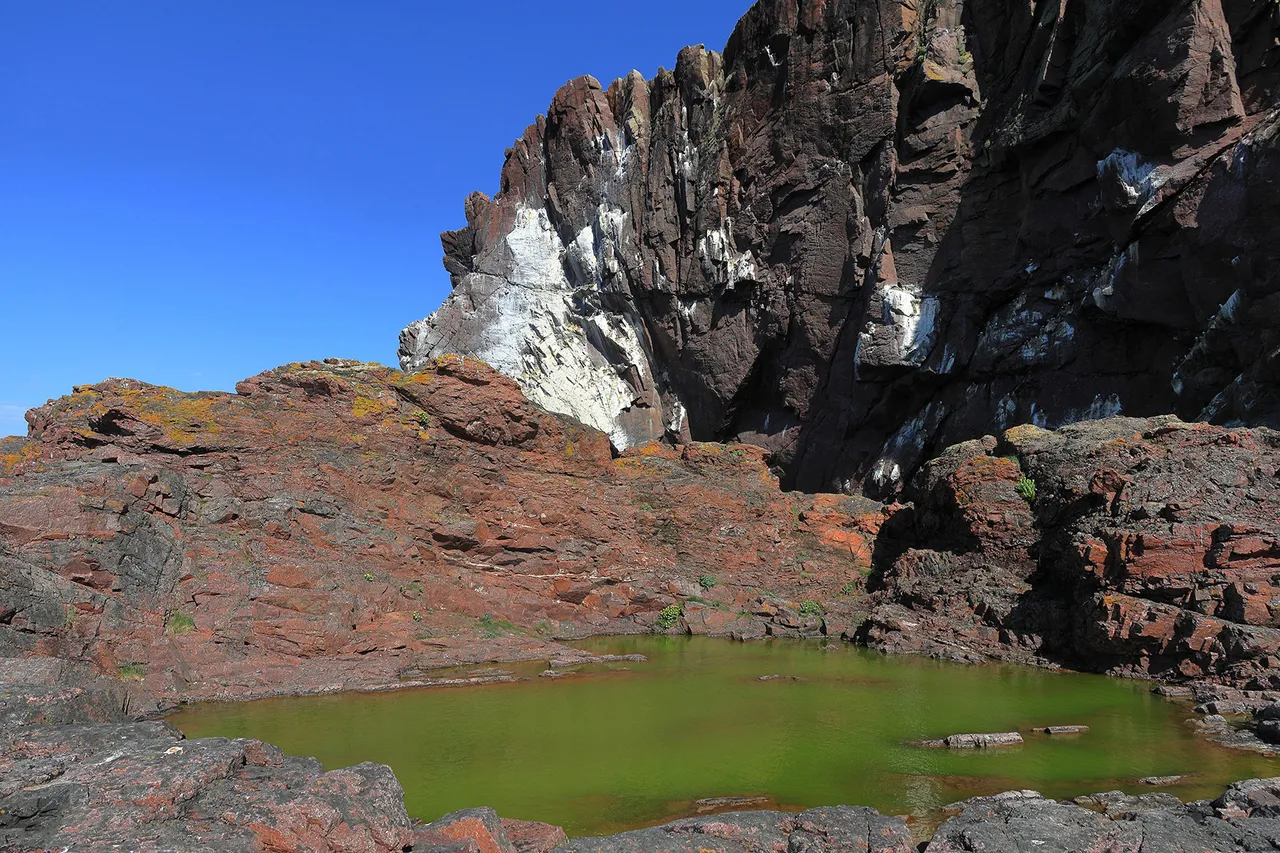
Come closer, and it seems that some vandals with spray cans of paint have been here. But suddenly the wind changes its direction, rushing from the side of these painted rocks in my direction and I almost lose consciousness.
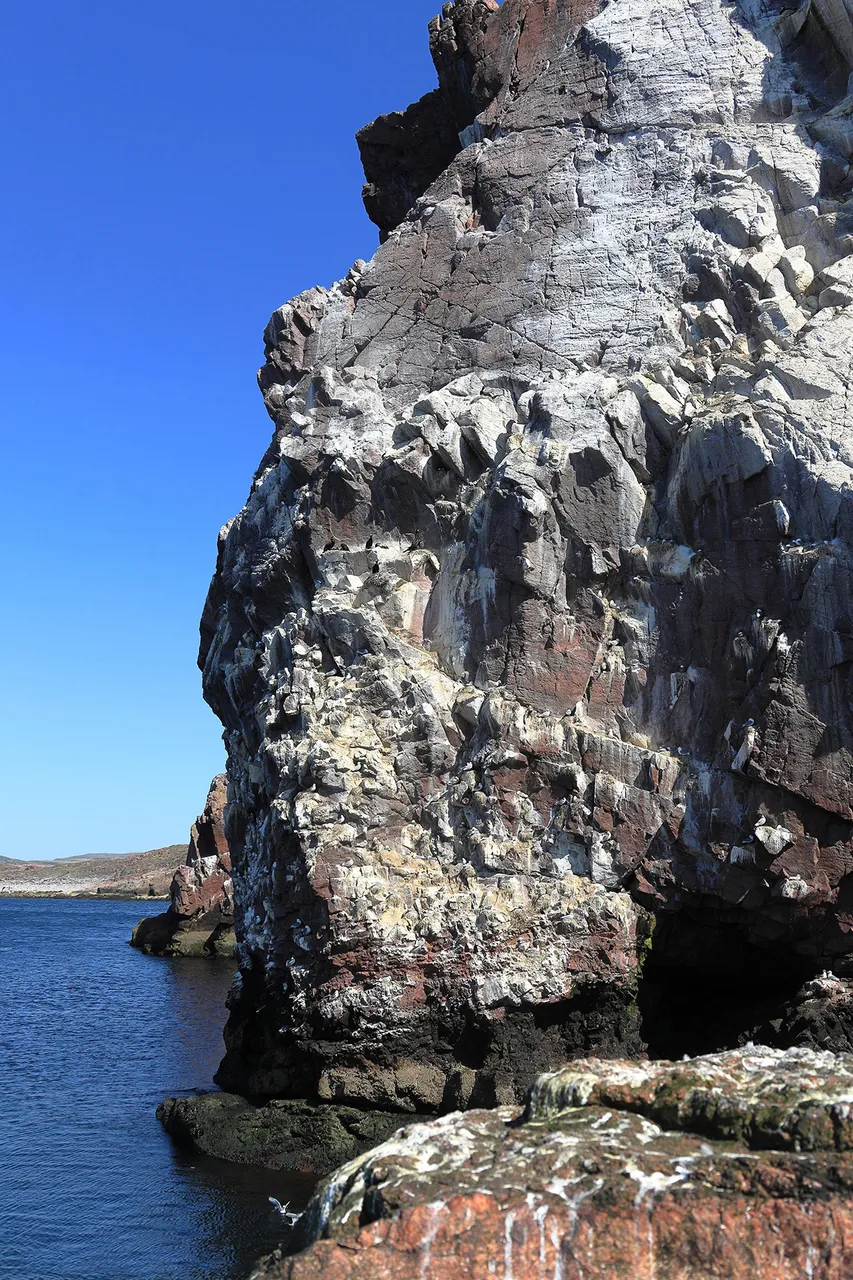
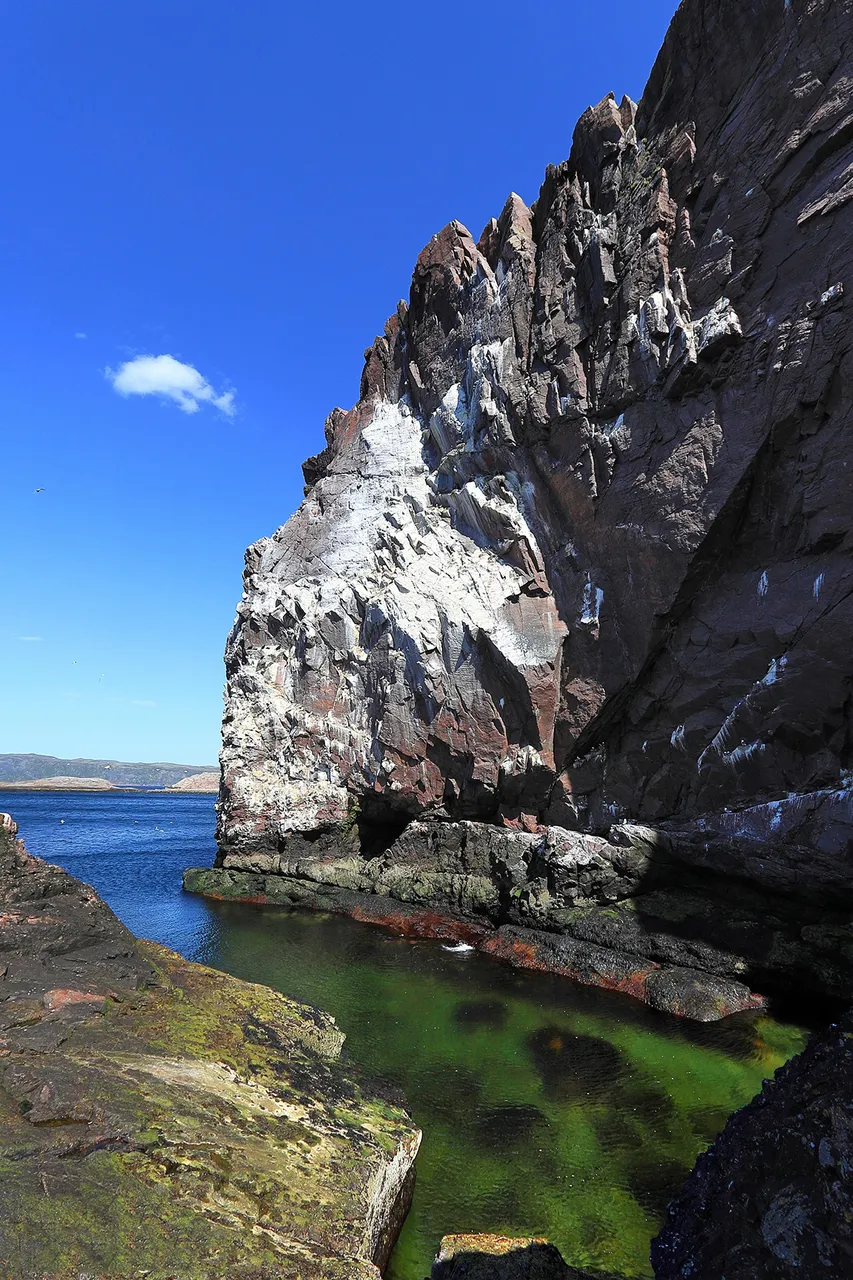
A wave of ammonia just knocks me off my feet, knocks the tears out of my eyes and confuses my consciousness. I'm not exaggerating, and that's what I was talking about when I mentioned the risk of life. This is a very strong smell, probably the most pungent and penetrating of all that I have met. And I was really unlucky to be here today in such wonderful weather. Usually the wind blows from the sea, a strong wind, and carries all the smells further into the tundra, but not today…
Somehow coping with my stomach and keeping my consciousness in this world. I understand that the wind also brings sounds, a wave of sounds, the cries of hundreds of throats. And right behind the stones I can already see those for whom I came here.
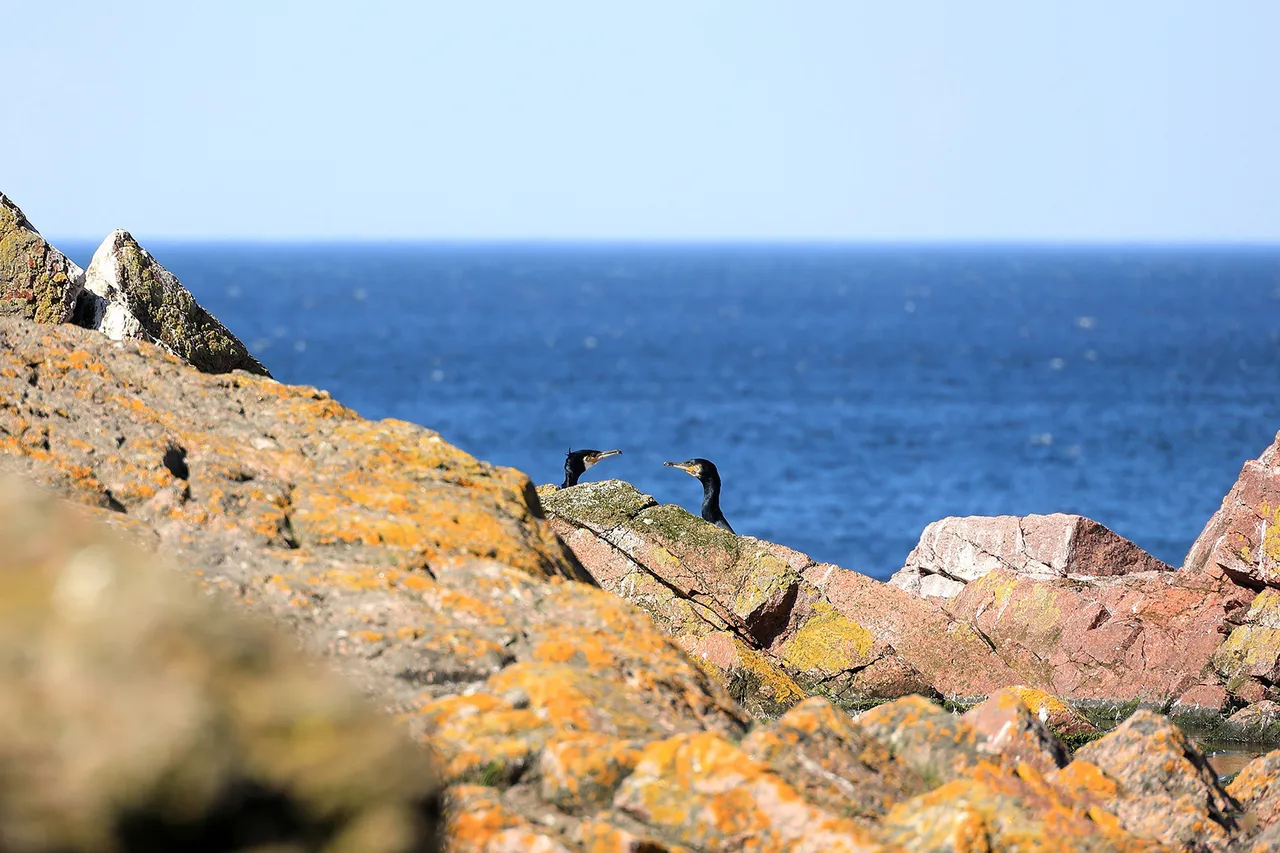
It looks very funny, as if the colony has posted two sentries on the approach to its fortress. Meet Beavis and Butthead. Sorry, of course it's a Great Atlantic Cormorant (Phalacrocorax carbo). And today we will "hunt" them.
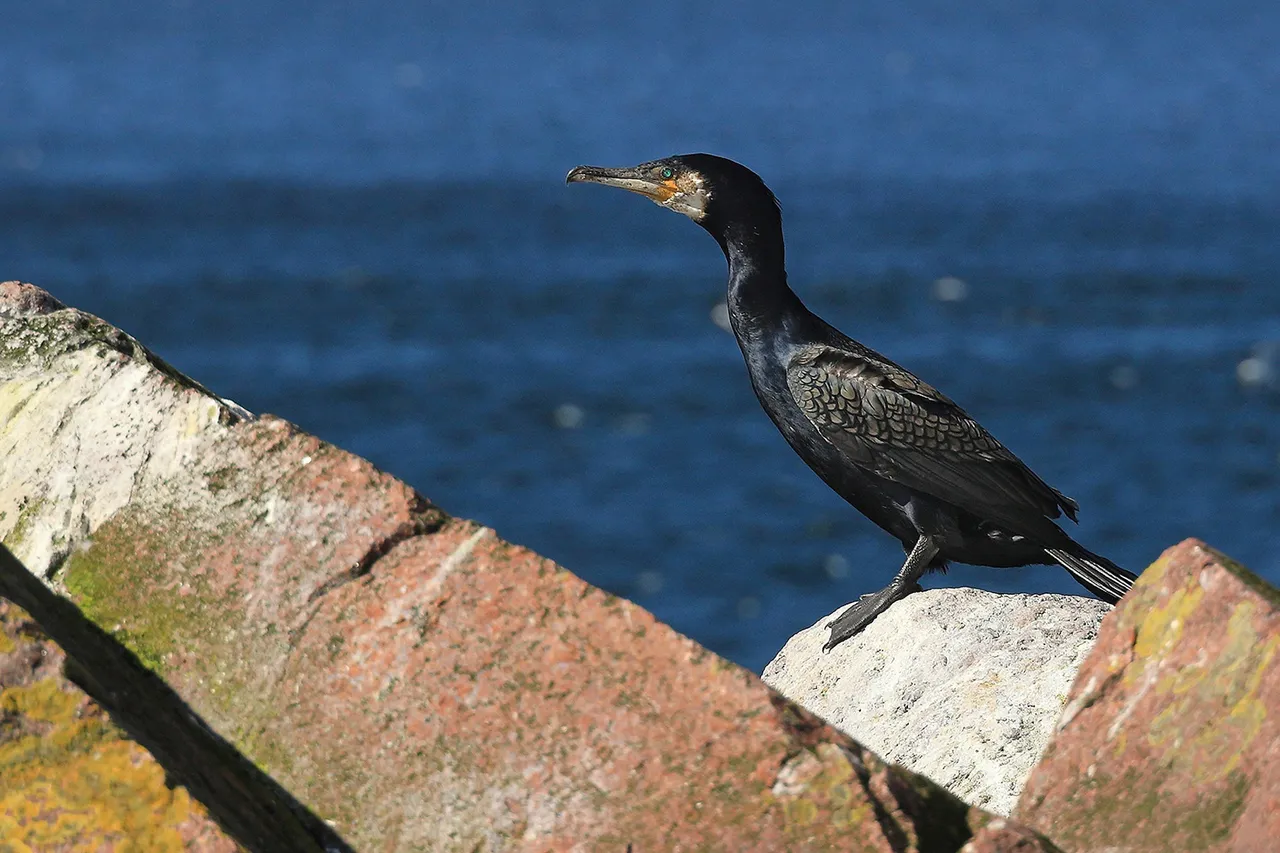
A little ahead of events, I will say that at the time of photographing I did not even know that this animal species in the red book. learned this only after preparing the post. During the shooting, I became imbued with these birds, learning about their difficult fate, I became even more imbued. So let's just take a closer look at these cute stinckers.
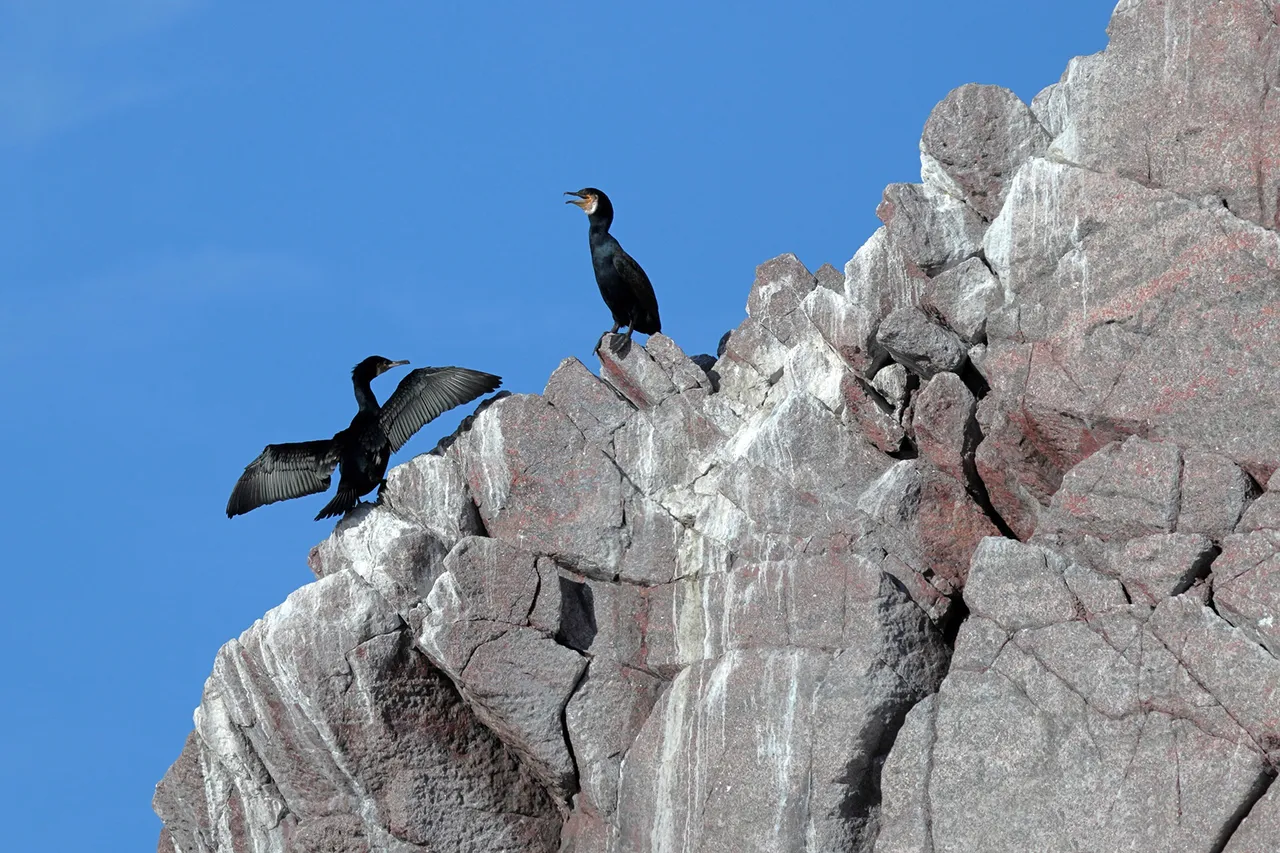
 | 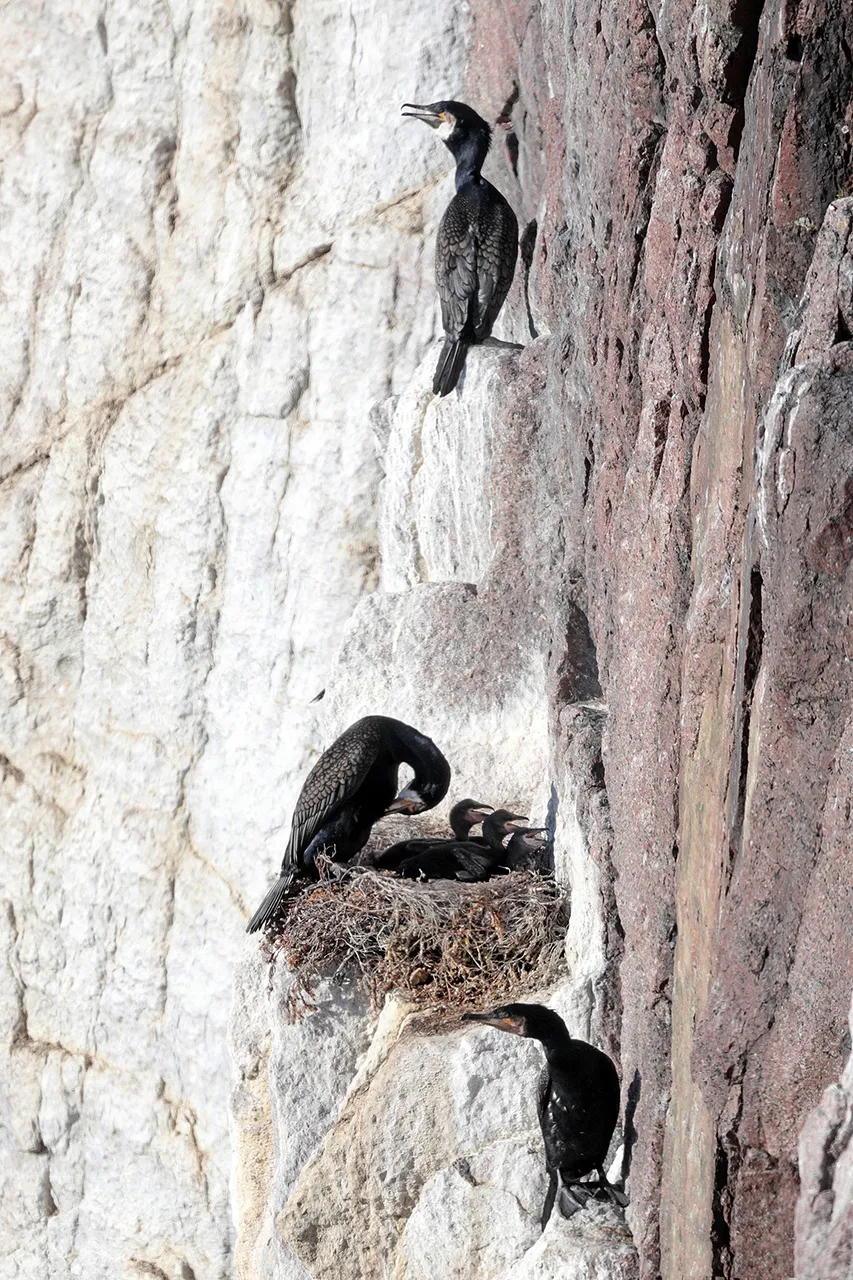 | 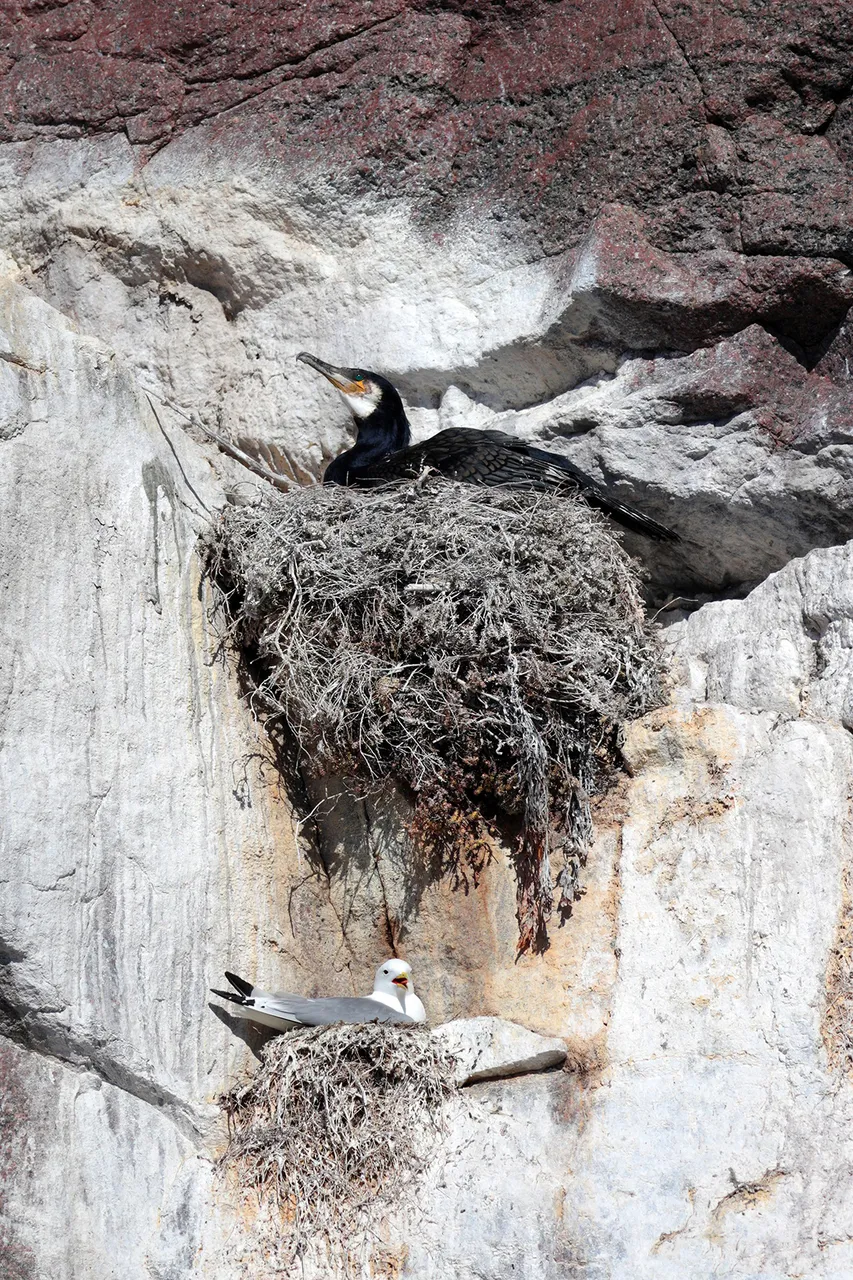 |
|---|
There is a reason I was in such a hurry to visit this place in the spring, because now all birds, and not only, are in the whole period of procreation. And Cormorants are no exception. The bird market is dotted with nests where you can see chicks of different ages.
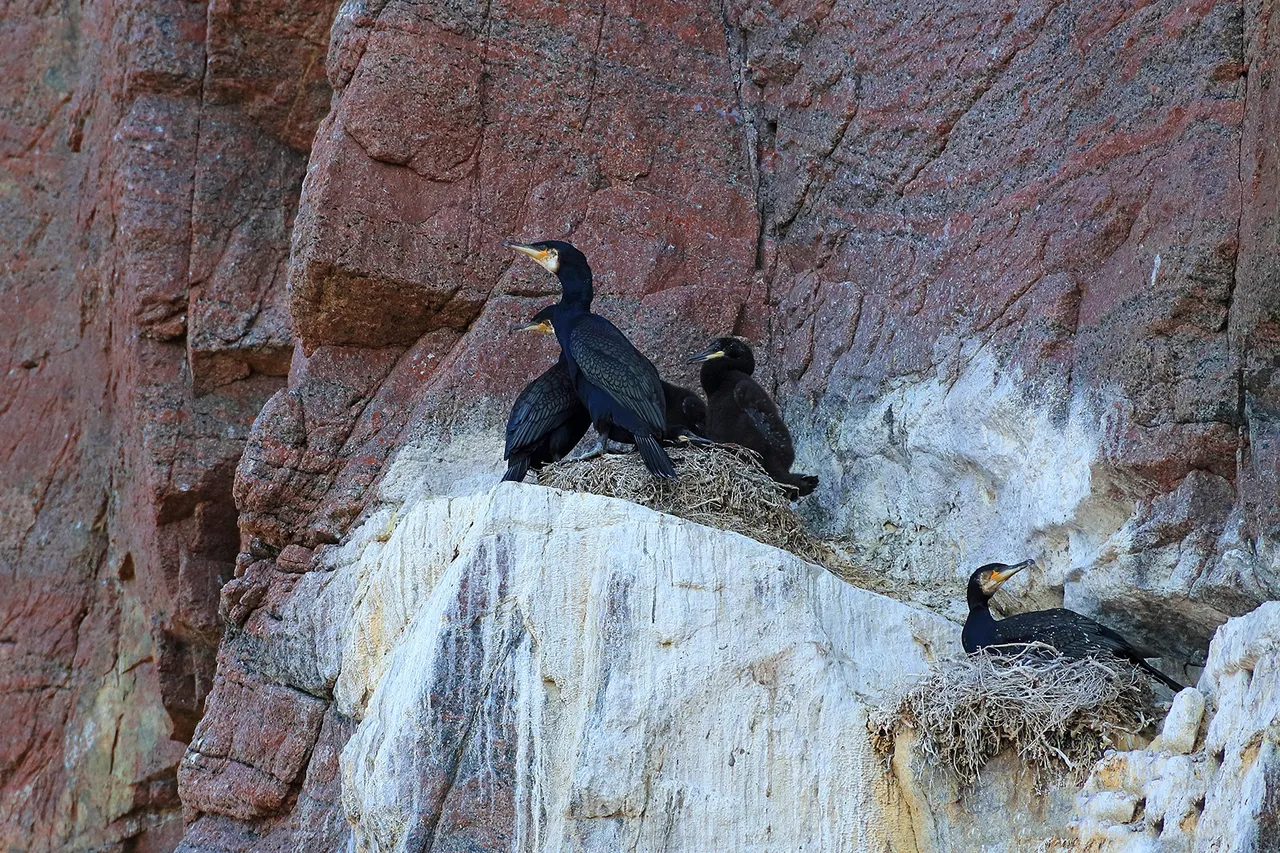
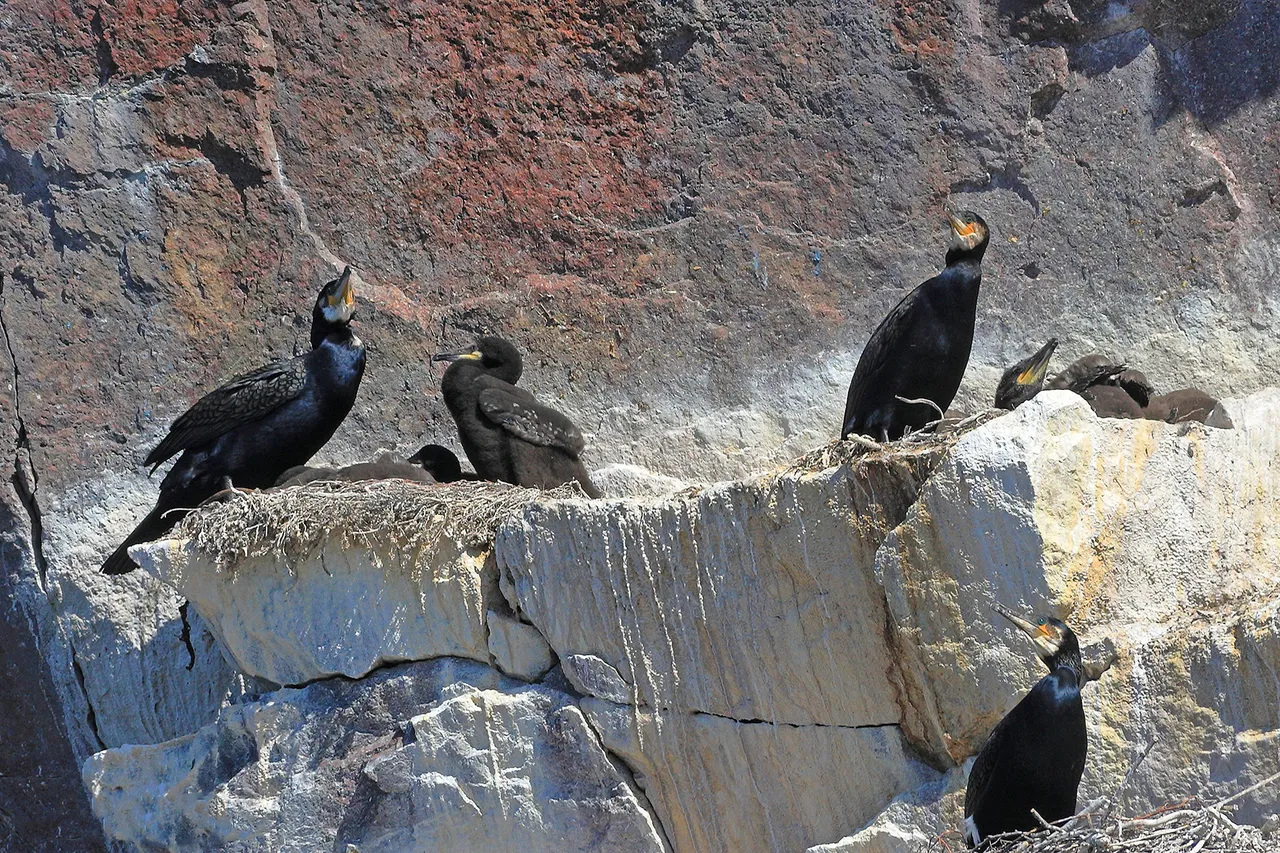
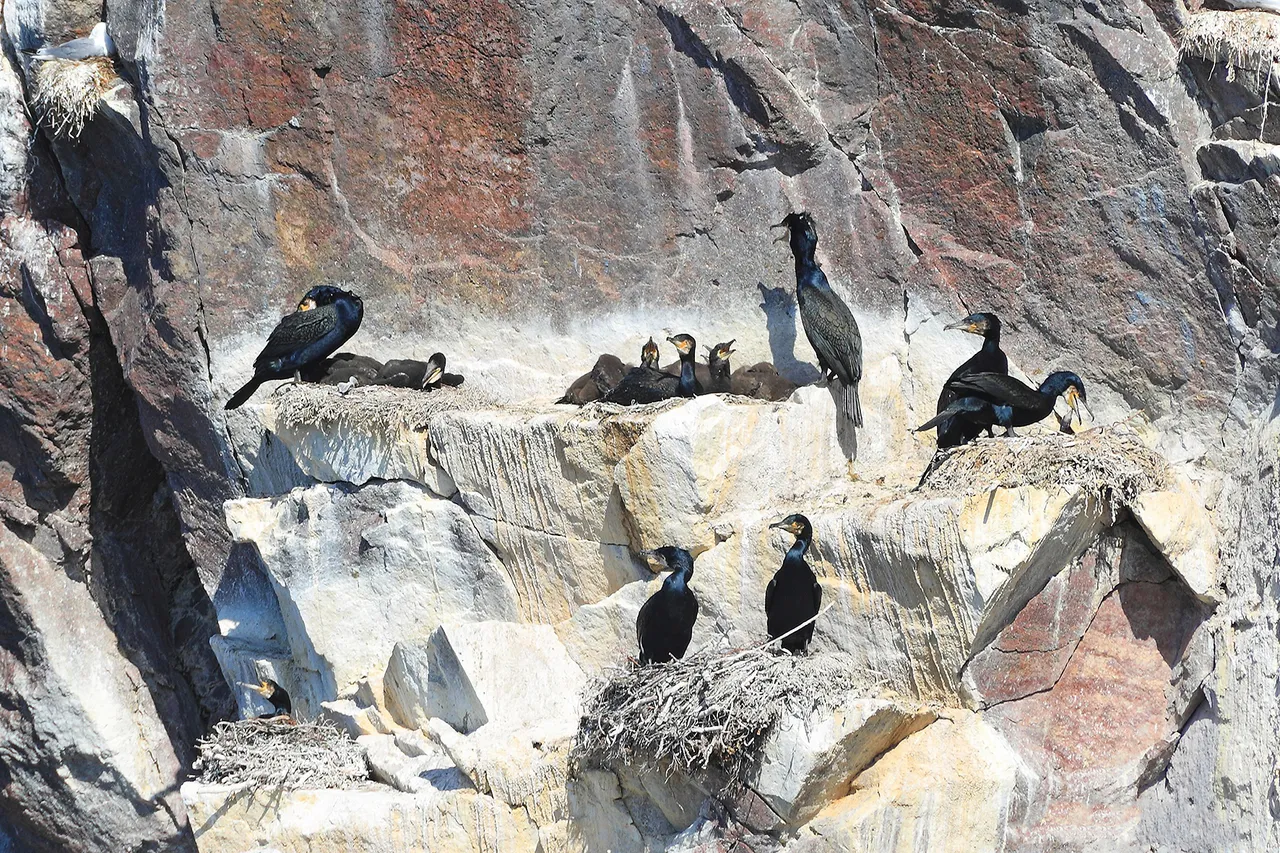
Someone was born only a couple of weeks ago, and someone has clearly been more than a month. However, the guys in the nests are still absolutely not independent. Only at the age of 1 month they will begin to swim, and they will make their first flights by 3 months. These guys will grab their first kiss only upon the onset of puberty, at the age of 3 years…
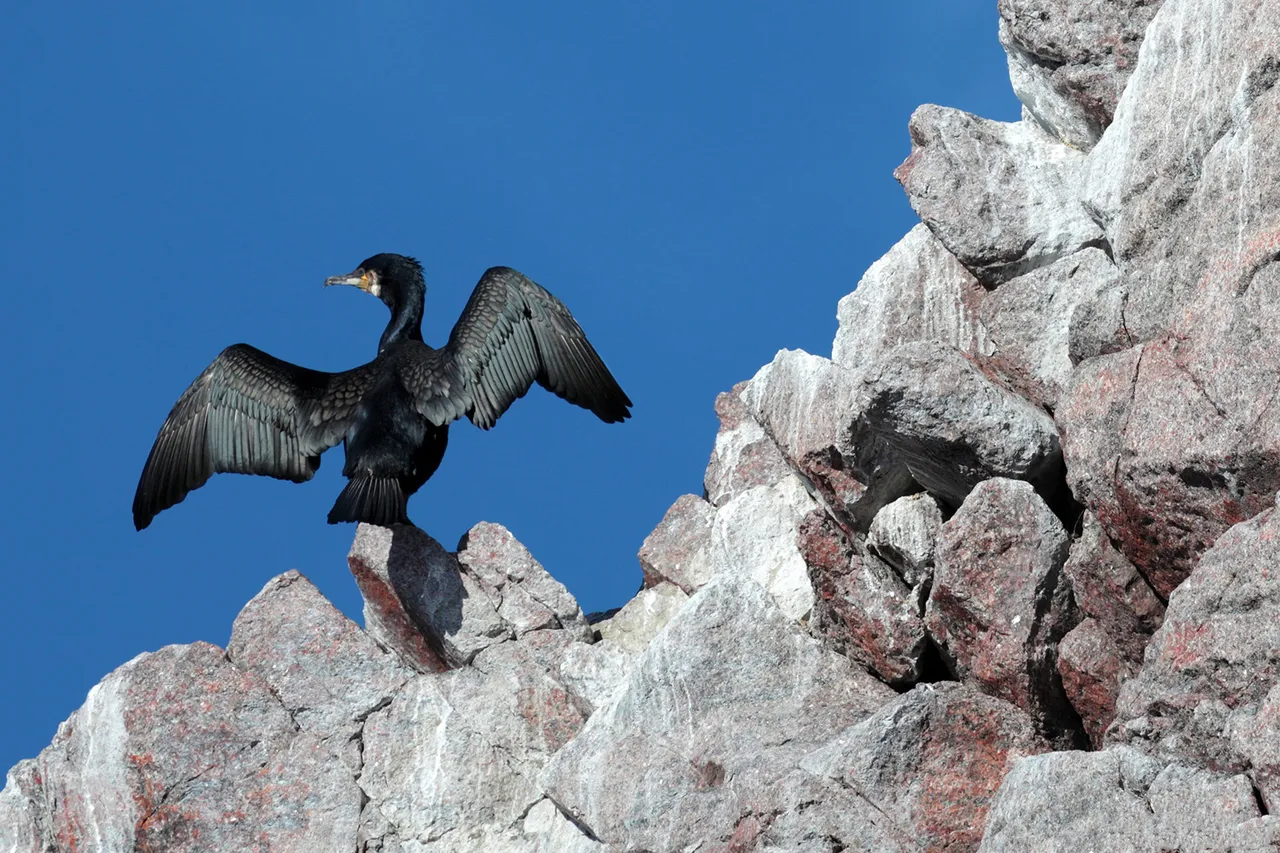
The saddest thing is that at best only half of all these chicks will live to adulthood, maybe even less, about 30%. This species has a very high mortality rate in the first year of life. Chicks are very sensitive to overheating or cooling, there is a fierce struggle for resources inside the nest, and the rocks themselves do not contribute to easy survival when the baby begins to leave the nest.
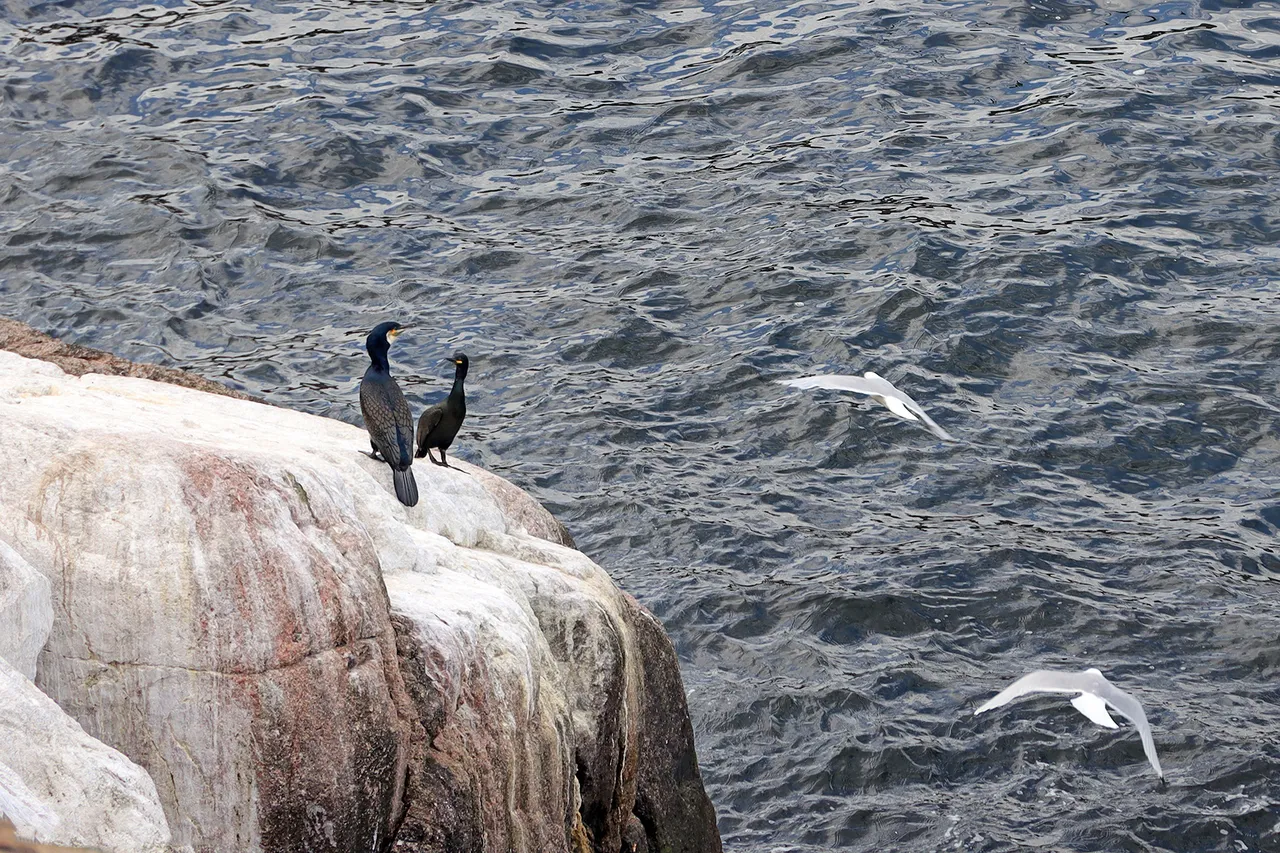
A fairly common situation among birds. Moreover, it is not necessary to condemn cormorants-parents. In their defense, I will say that this species is monogamous throughout life. This is not only a "trick" of swans.
I think you guessed that their main food is fish. That is why their droppings have such a strong smell and are so corrosive. Most likely, these rocks will remain white forever.
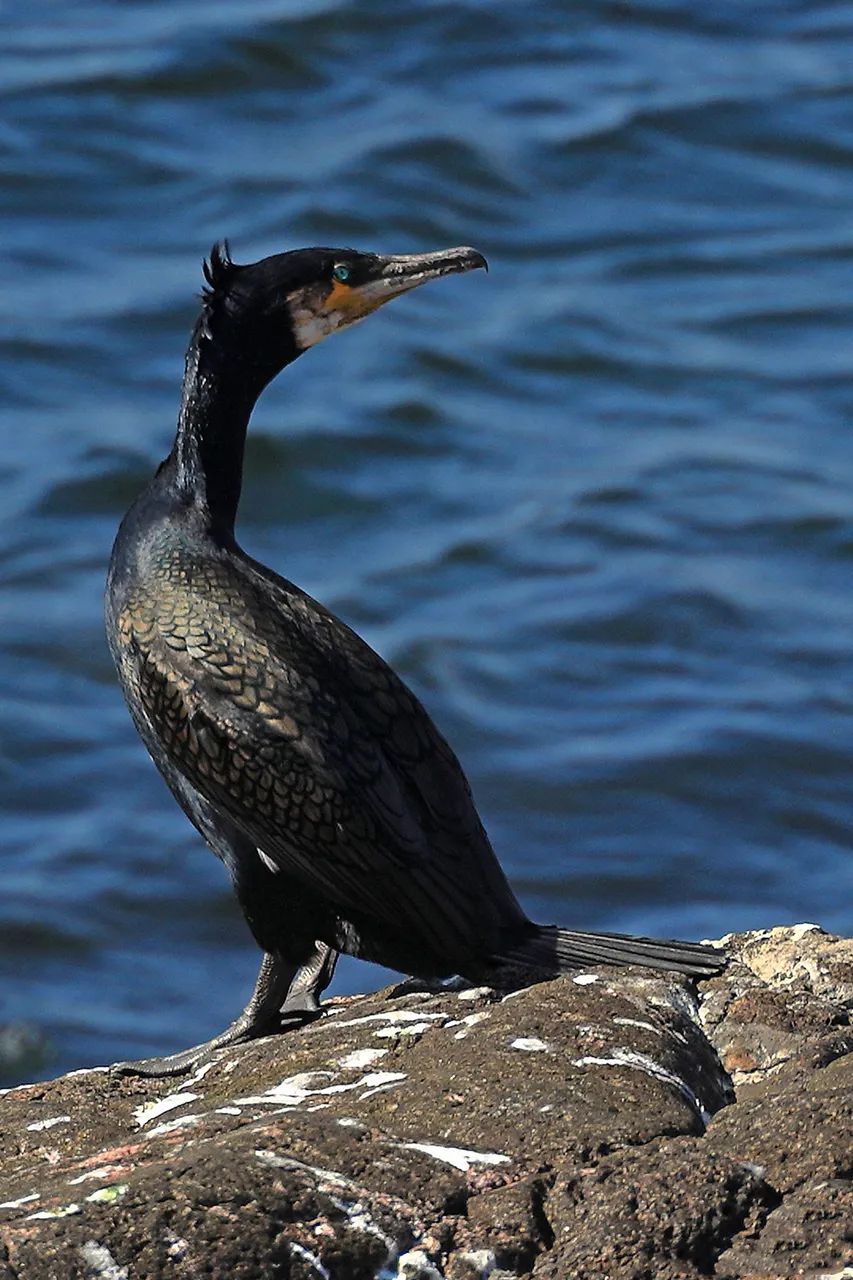
In any case, it is a real pleasure to observe wild birds in their natural habitat so close. Beautiful creatures are graceful even on land, not only in flight. The wingspan of an adult cormorant reaches 1.5 meters. But most of all I was amazed by the color of their eyes, bright turquoise, matching the sea.
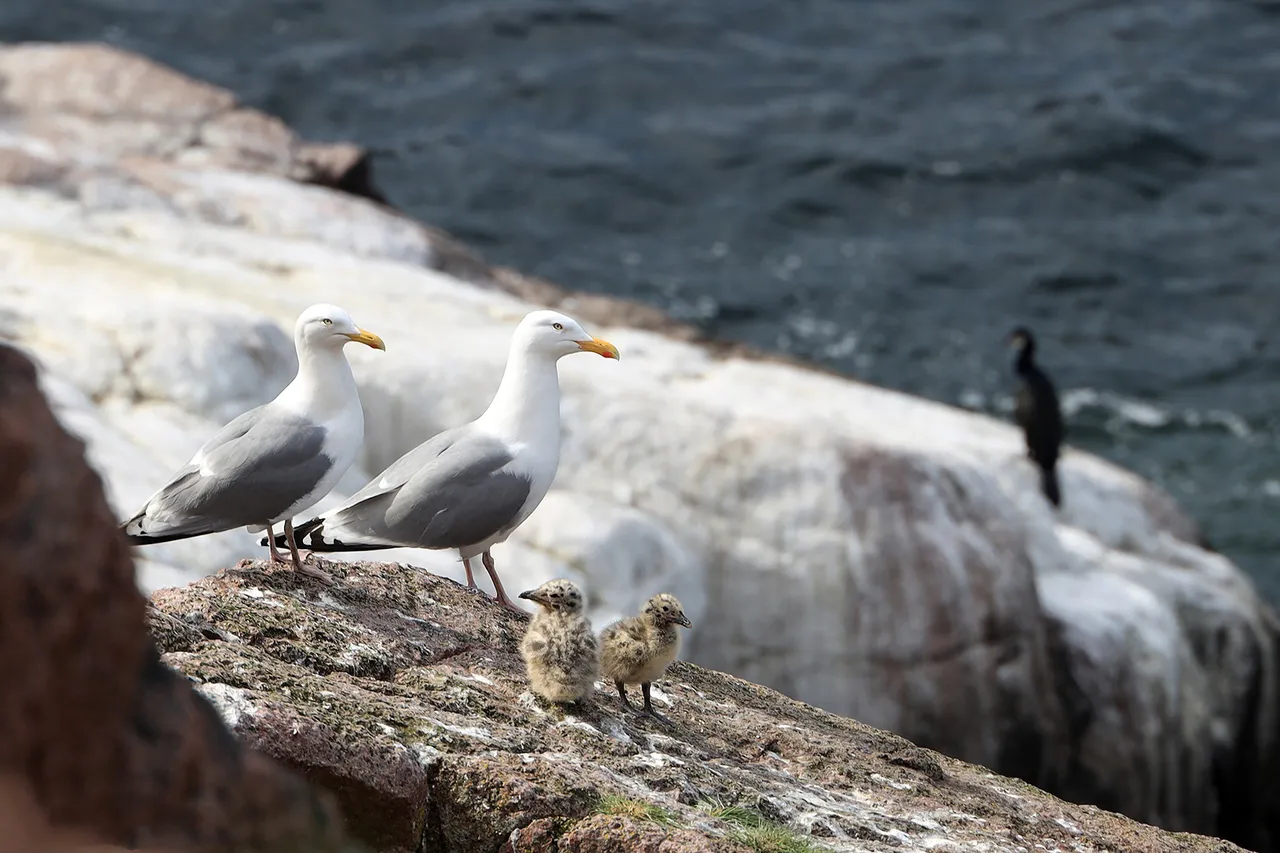
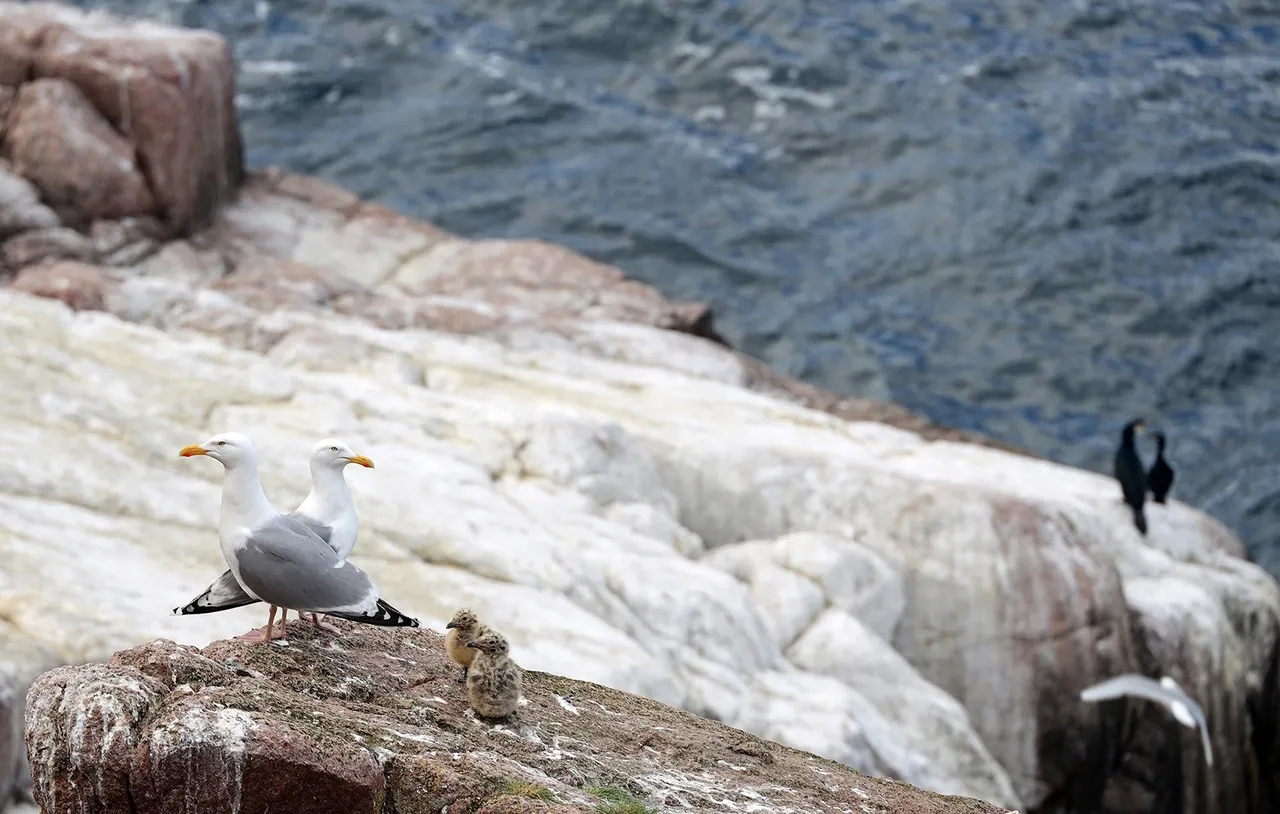
A pleasant bonus was the proximity of two colonies. Ordinary seagulls live next to cormorants. Often their nests are located side by side, as in an apartment building. And of course the seagulls also have a breeding season. Managed to catch a couple of cozy shots with chicks who are being instructed.
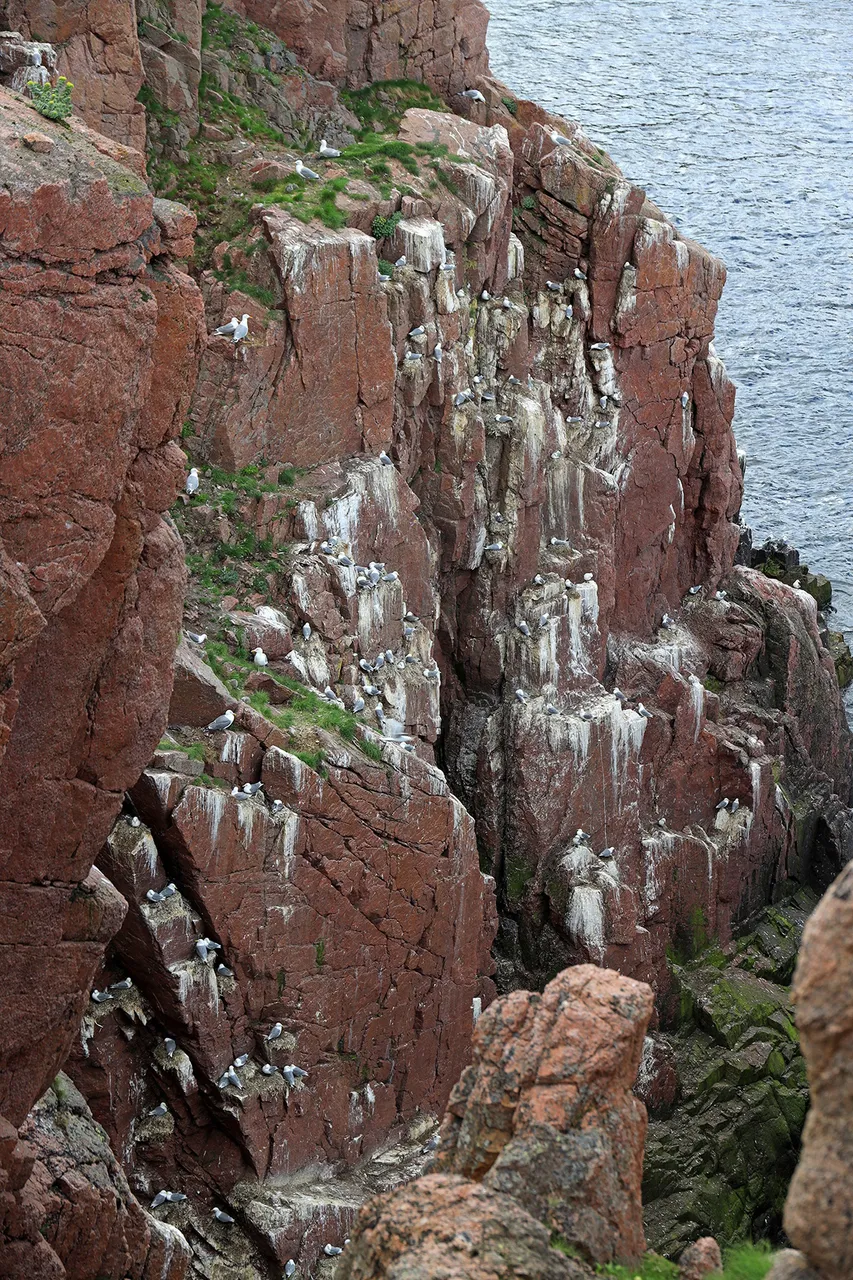
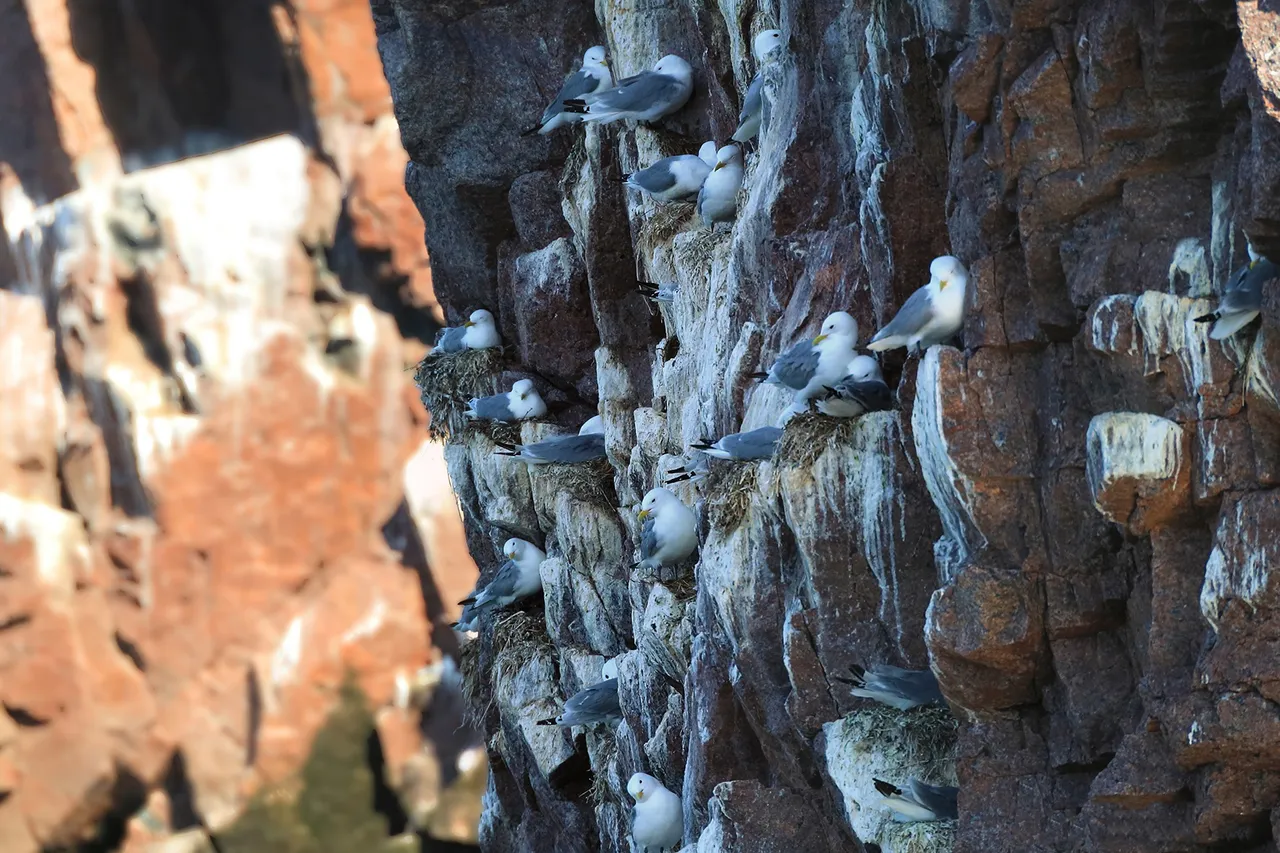
By the way, the presence of gulls in this colony suggests that cormorants settled here a long time ago. Usually, cormorants are the first to find a convenient and safe place for a colony, and over time other species begin to join them, creating a mega colony of large variety. After the gulls, herons should be added here, so next time I can see a third species.
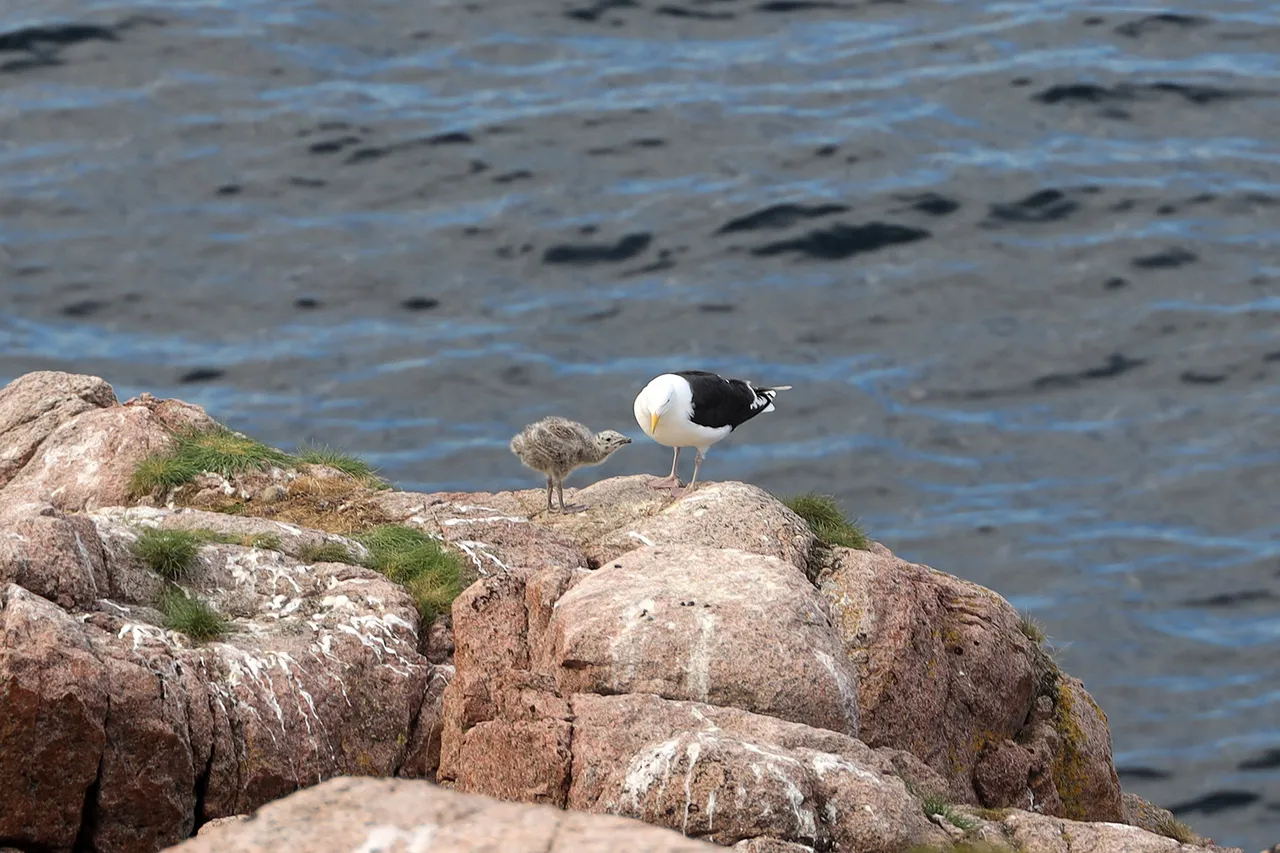 | 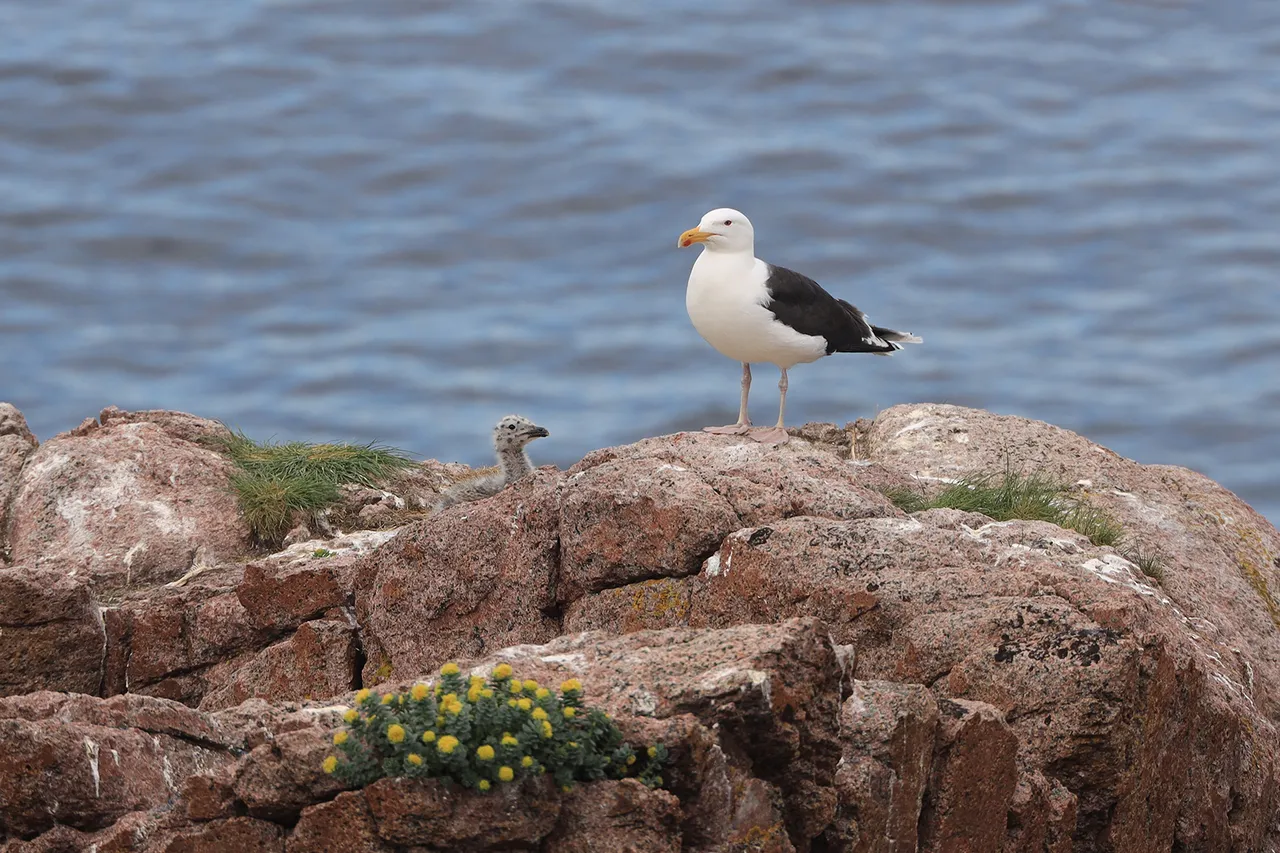 |  |
|---|
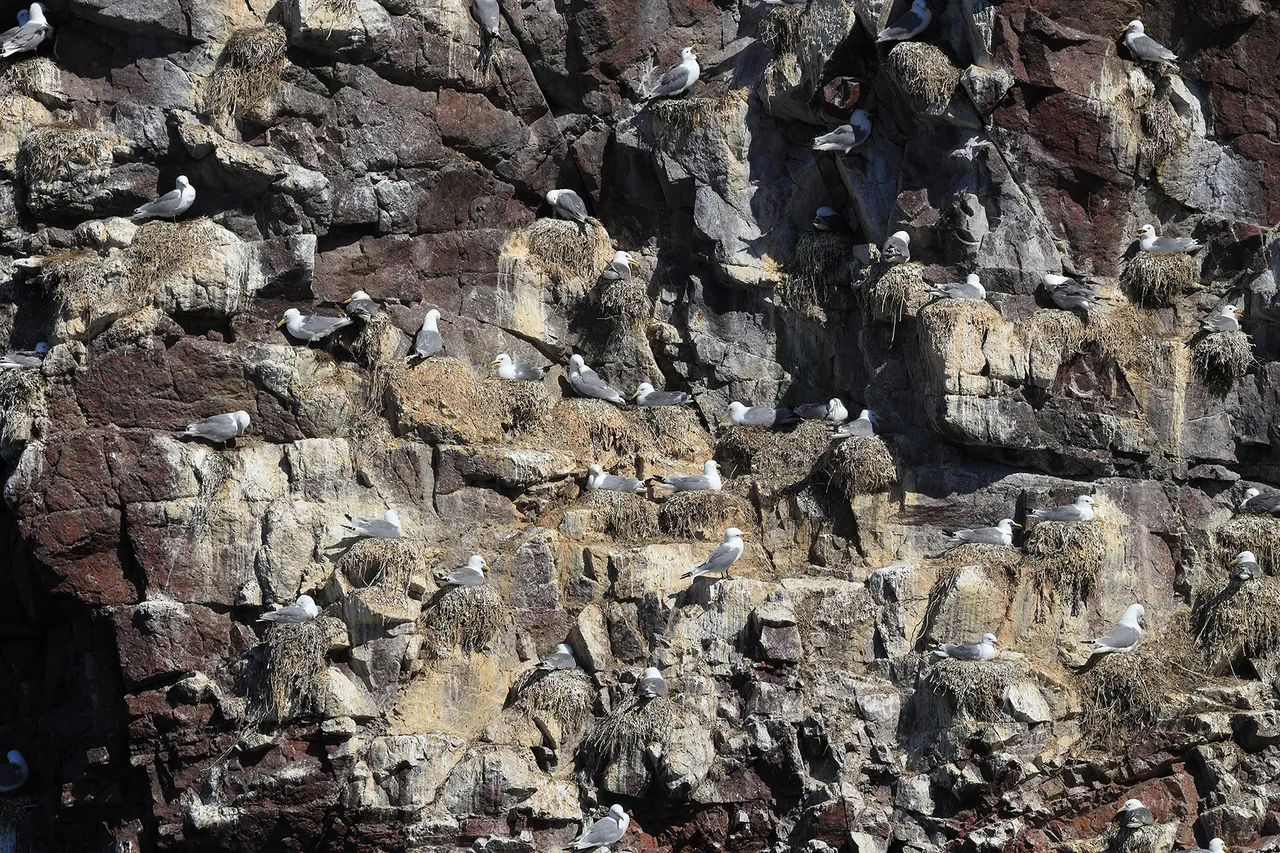
I'm already used to the smell. And I was even able to take a closer look at the surroundings and see a nice bonus in the form of delicate flowers of the Kalmia procumbens. Which clearly feels comfortable here, among so many first-class fertilizers.

 |  | 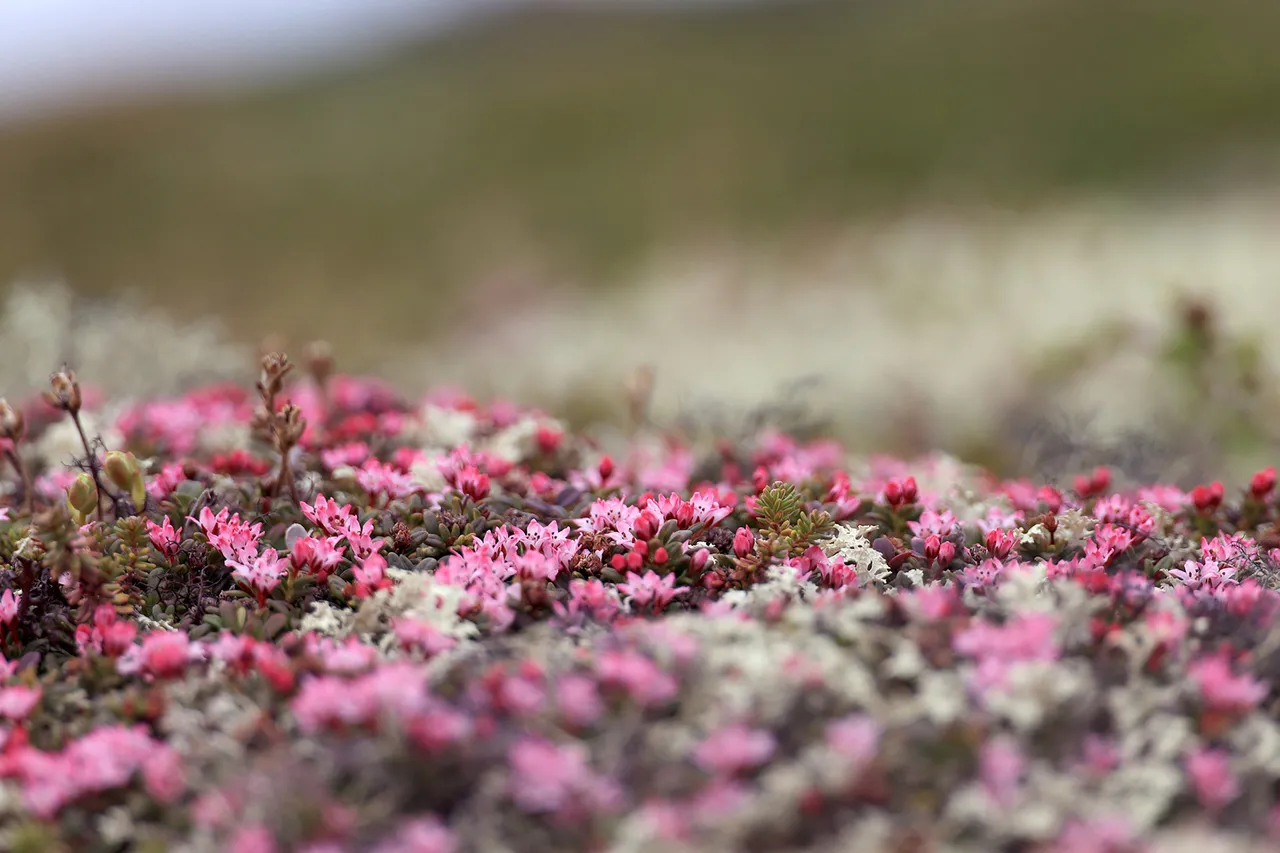 |
|---|
I will definitely come back here next spring, or maybe even this summer, to see how the grown-up chicks learn to fly and hunt. Yes, I could watch documentaries about them, read on the Internet and look at hundreds of photos of higher quality than mine. But after you have at least once managed to see a wild animal live, you get into it, and to all its kind, it becomes more native and you are looking for a meeting with it again.
